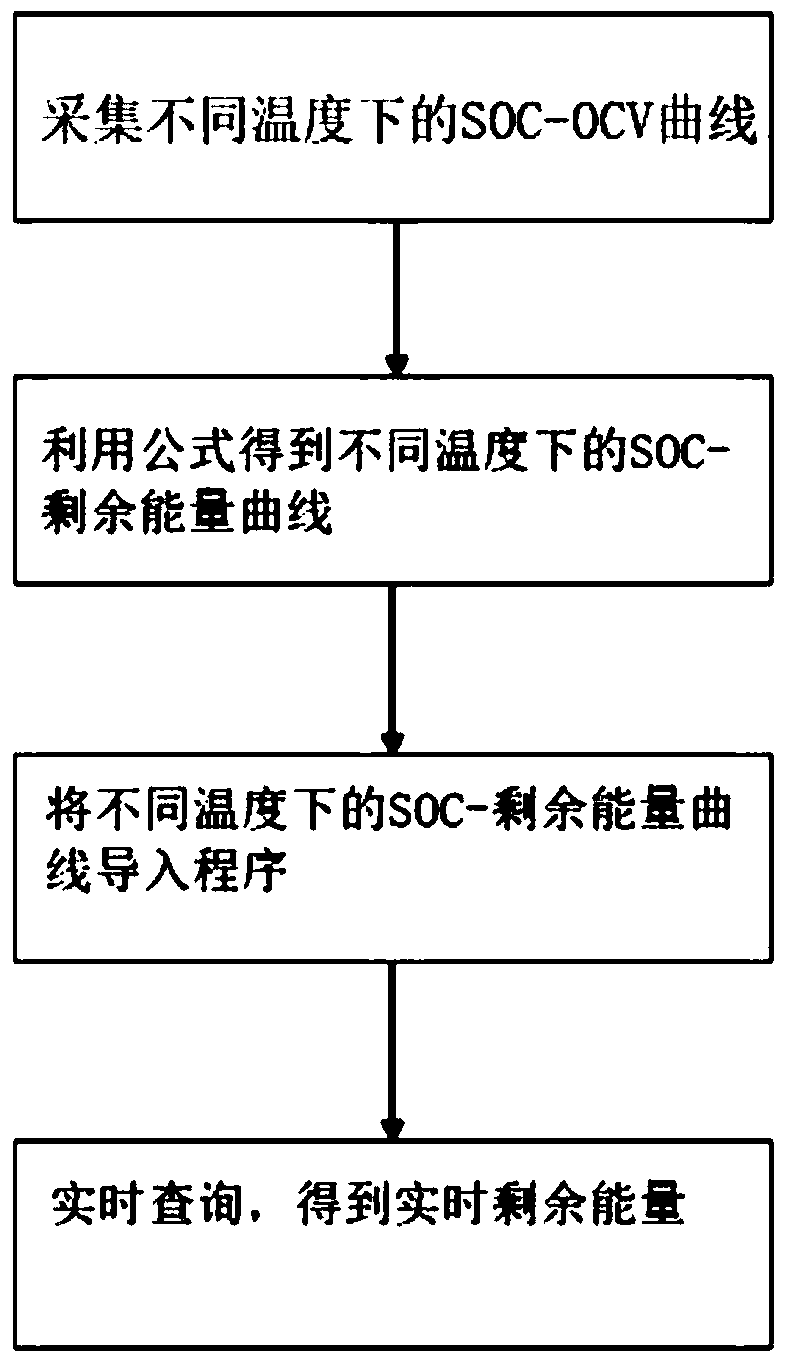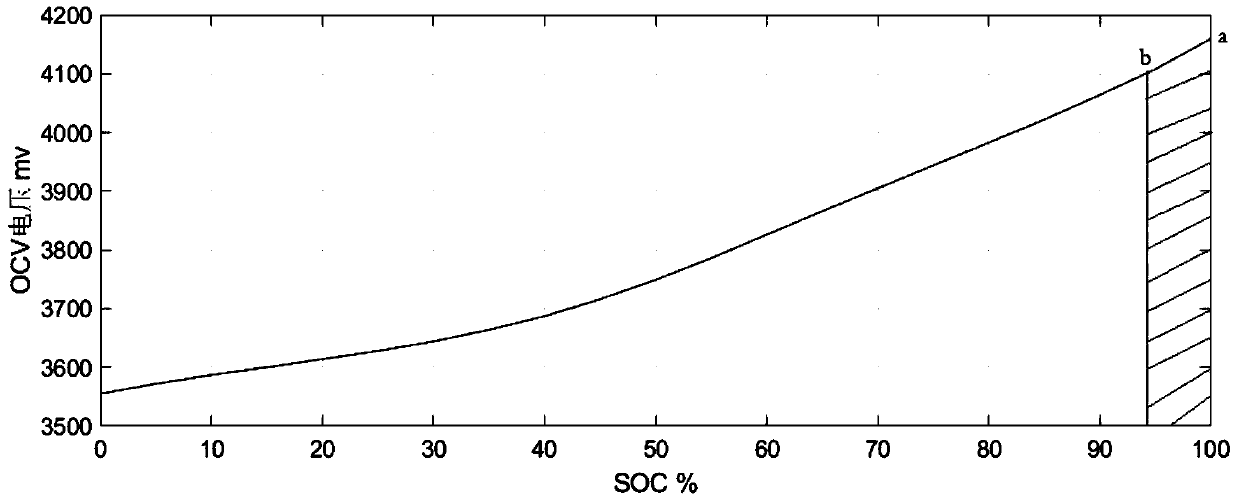Method for obtaining surplus energy of battery based on SOC-OCV curve
A SOC-OCV and residual energy technology, applied in the direction of measuring electrical variables, measuring electricity, measuring devices, etc., can solve the problems of time-consuming and labor-intensive residual energy, and achieve the effect of reducing resource release, reducing resource consumption, and improving calculation accuracy
- Summary
- Abstract
- Description
- Claims
- Application Information
AI Technical Summary
Problems solved by technology
Method used
Image
Examples
Embodiment 1
[0044] A method to obtain the remaining energy of the battery based on the SOC-OCV curve, such as figure 1 shown, including the following steps:
[0045] S1. Obtain the SOC-OCV curves at different temperatures by using the charging and discharging cabinet and the high and low temperature box;
[0046] The rated capacity (Q0 in Formula 1) and the total energy of the battery (TotalEnergy in Formula 2) at each temperature can be obtained through the temperature-capacity curve and the temperature-energy curve;
[0047] S2. Calculate the residual energy of each SOC corresponding point in the SOC-OCV curve at different temperatures according to the following formula, as figure 2 Shown:
[0048] S21. First calculate the released energy UsedEnergy of the battery:
[0049]
[0050] S22. Calculate the remaining energy LeftEnergy of the battery again:
[0051] LeftEnergy=(TotalEnegry-UsedEnergy)×SOH formula (2)
[0052] In formula (1) and formula (2): U a is the voltage correspon...
Embodiment 2
[0107] Embodiment 2 is further optimized on the basis of the scheme of Embodiment 1, and the interval between the two charge states a and b is set to 5%-10%, preferably 5% and 10%.
[0108] For the integral itself, the more intervals are divided, the higher the accuracy; but for the SOC-OCV curve, too many intervals will increase the test workload. A large number of experimental studies have found that when the SOC test interval is selected to be 5%-10%, it is possible to ensure the calculation accuracy of the remaining energy and reduce the test workload.
Embodiment 3
[0110] Embodiment 3 is further optimized on the basis of Embodiment 1. In step S2, a process of self-learning is added to the SOC-OCV curves at different temperatures. The specific steps are as follows:
[0111]S23. Calculate the energy actually released by the battery:
[0112] When the SOC is 90%, the energy actually released by the battery at this time is:
[0113] In the formula: U is the voltage at the current moment, I is the current at the current moment, dt is the task running period for calculating the accumulated discharge energy, T 1 It is SOC90_T, indicating the time from full charge to discharge to SOC 90%;
[0114] S24, replace UsedEnergy with E, bring into formula (2), obtain the corresponding residual energy LeftEnergy of 90% SOC SOC_90 ';
[0115] S25. Calculate LeftEnergy SOC_90 ’ and LeftEnergy SOC_90 The difference between ΔE, when ΔE is greater than 3% TotalEnenrgy*SOH, 90% SOC at the current temperature corresponds to the new remaining energy New...
PUM
 Login to View More
Login to View More Abstract
Description
Claims
Application Information
 Login to View More
Login to View More - R&D
- Intellectual Property
- Life Sciences
- Materials
- Tech Scout
- Unparalleled Data Quality
- Higher Quality Content
- 60% Fewer Hallucinations
Browse by: Latest US Patents, China's latest patents, Technical Efficacy Thesaurus, Application Domain, Technology Topic, Popular Technical Reports.
© 2025 PatSnap. All rights reserved.Legal|Privacy policy|Modern Slavery Act Transparency Statement|Sitemap|About US| Contact US: help@patsnap.com



